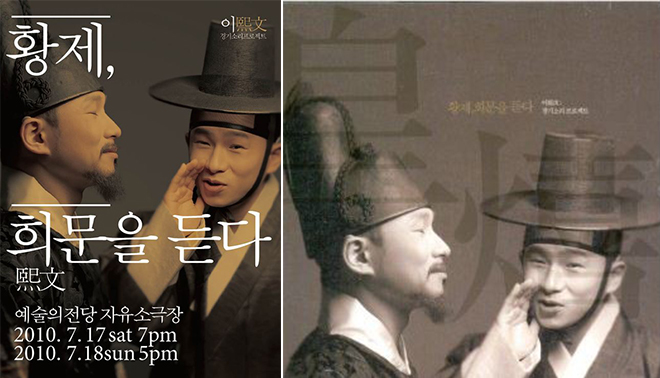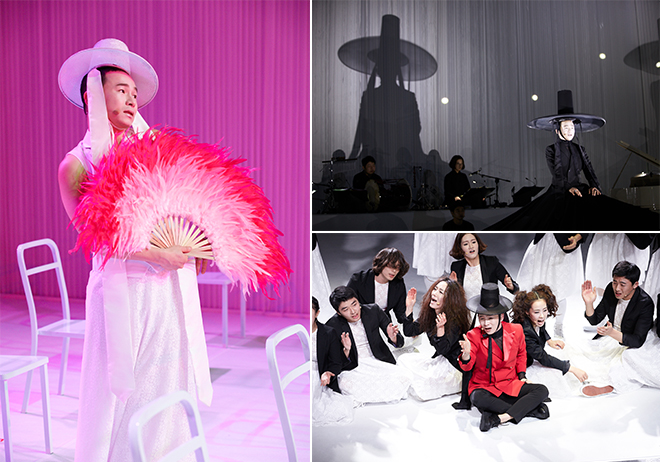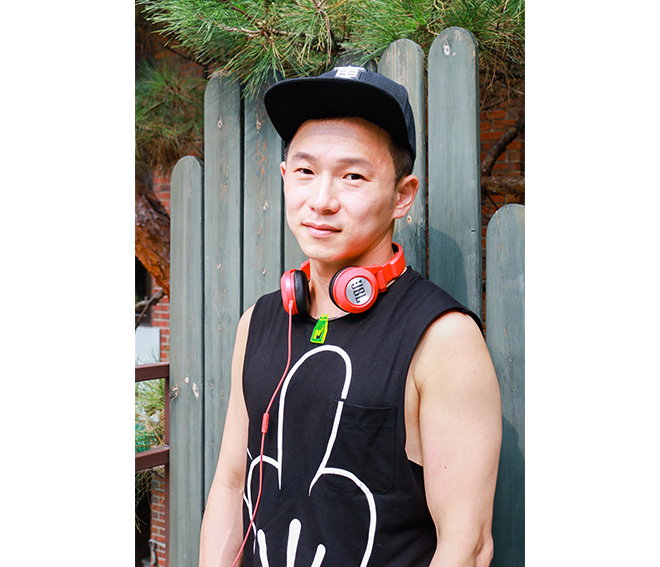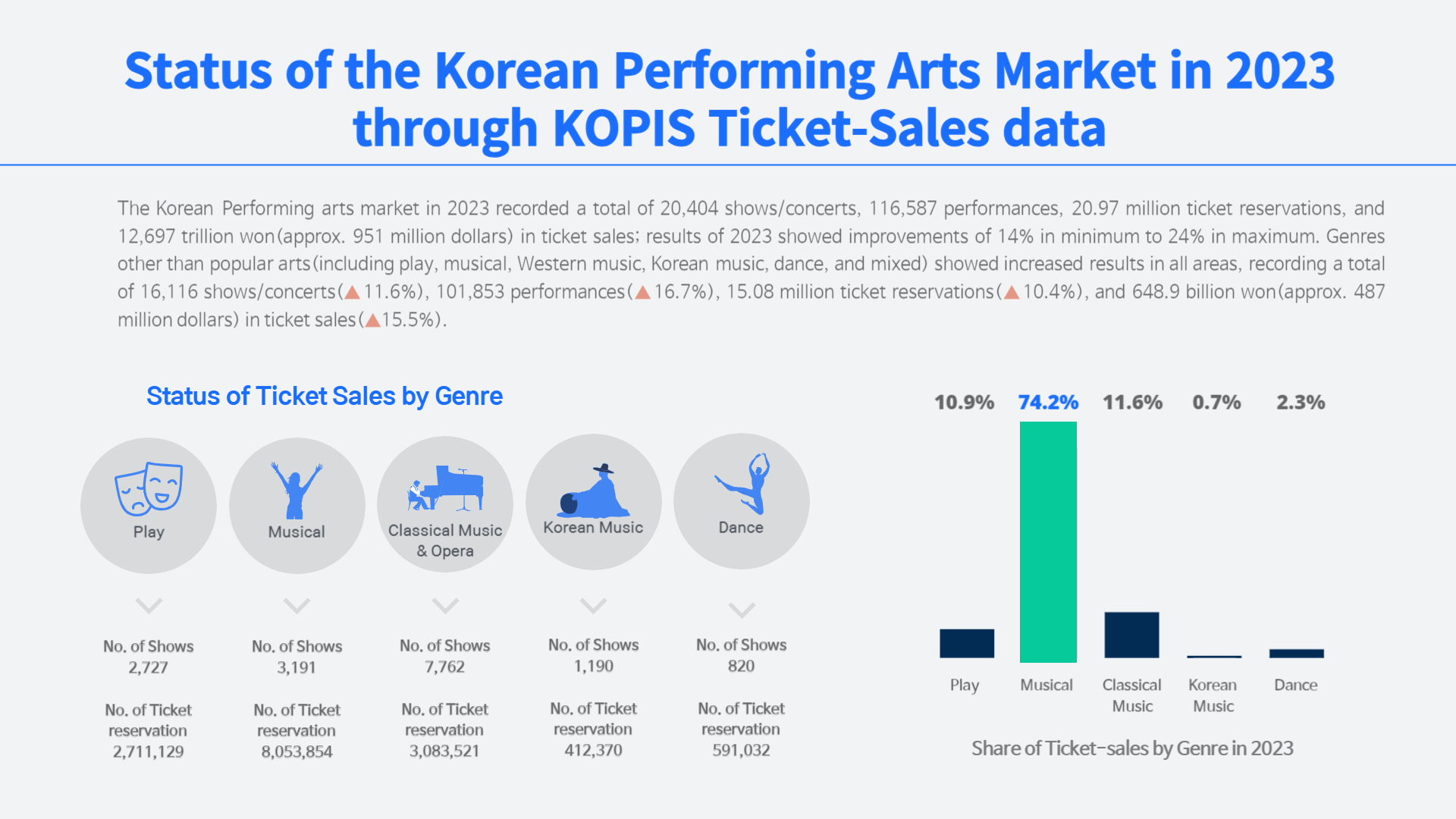Lee Hee-moon, a Joseon ‘Idol’ to some
In the 1990s, several performers of haegeum (two-stringed zither) created music that contemporary audiences could enjoy, and the public began to show interest in traditional Korean music. Subsequently, traditional Korean music, repackaged as “fusion” or “creative” traditional music, gained new popular appeal. Recently, the media has started paying attention to the Gyeonggi minyo, the folk songs of Gyeonggi-do, thanks to Lee Hee-moon. Lee’s sensational shows, which find him donning everything from a curly wig and shorts to stilettos and fishnet stockings, have shattered the image typically associated with Gyeonggi minyo, restyling the form with sometimes sophisticated, sometimes B-list touches.
What sets Lee apart from other artists is that he knows what the public likes and prepares his performances with the audience’s perspective in mind. One cannot help but wonder what enables him to think in such ways. I sat down to interview Lee hoping to learn more about his past, present, and maybe even his future.
|
| |
| ▲ Sorikkun (traditional vocalist) Lee Hee-moon © Lee Kang-hyeok | |
Past
Watching you perform, I can’t imagine what your life would look like if you weren’t singing on the stage. What was your pre-stage life like?
It might be surprising, but I was a quiet student during middle and high school, not the talkative kind. I was quite the model student, too, with good grades. When I was called out to sing in music class, I did, but I was an introvert and nervous about speaking in front of a crowd.
During my school years, I was very much into pop stars. Singer Min Hae-kyung was my long-time favorite. So I practiced a lot to sing and dance like her. After starting university, I enjoyed clubbing with friends, and spent more time watching films of various kinds as a member of the 16mm film club than studying.
|
| |
| ▲ Poster (left) and album cover for Emperor, Listen to Hee-moon © Hee-moon Lee Company | |
Since Emperor, Listen to Hee-moon, your company’s posters and stage costumes have been quite striking. You obviously know how to use visual effects, and it’s part of your charm. How did watching films in your youth influence you?
What I first noticed in the films was visual beauty. I think a person who stands on a stage should be beautiful. I mean, styling is important to balance out flaws and highlight one’s best features. I was also very interested in music videos. I liked the so-called “video stars” like Madonna and Michael Jackson and found their music videos fascinating. I was also into music videos of director Chris Cunningham.
Back in college, I joined an entertainment company to become a singer, but it didn’t pan out well. After finishing my military service, I went to Japan to study. Looking for an alternative to my initial dreams of becoming a singer or other kind of entertainer, I studied music video production. I was most diligent during these years abroad. I was an exemplary student, recognized at school. I received a job offer from a famous Japanese music video company, and I was ready to go all out for a career as a music video director. Due to a minor mistake, though, the visa issue didn’t work out. I had to give up my dream and return to Korea. I was incredibly discouraged.
How did you start singing Gyeonggi minyo?
After coming back to Korea, I went to one of my mother’s performances. There, for the first time since my childhood, I met Lee Chun-hee (master of sori, traditional Korean singing). I was humming a folk song I heard as a kid, and seeing this, she suggested I try sori, and told me to come to her if I wanted to learn.
Ever since I was little, my mother wanted me to become an academic, so no one around me had ever suggested I learn sori. Master Lee’s suggestion that day was the first time in my life anyone had raised the possibility. Her words really resonated with me. So the next day, I went to see her. Initially, I was just going to learn it as a hobby. But as soon as she heard my Gin Arirang, she said I had to do sori.
You kept making music videos after returning to Korea. What made you decide to focus solely on Gyeonggi minyo?
In the beginning, I went to Master Lee’s academy to practice and hang out only when I wasn’t working. After taking lessons for a month, I entered a competition and did well. I competed a lot afterwards, and even went back to school, for the third time in my life. The program was more demanding than I thought, and it became increasingly difficult to study and make music videos at the same time. It was also when record sales were dropping as mp3s became more popular, and music video budgets were cut drastically. So I took some time to think seriously about my future and decided to go with what I could continue even when I get old, which was sori.
Because I had given up something I cherished to do Gyeonggi sori, I worked very hard. At that time, I didn’t have the chance to sing alone. Looking for a way to sing, I entered a competition. The four minutes on the competition stage were so precious to me. It was the only place where I could sing japga (a type of folk song). So I entered many competitions. Some people thought I was after the prize money.
It’s almost as if some powerful force has brought Lee Hee-moon down a winding path to lead him to Gyeonggi sori. It wasn’t an easy journey, but perhaps this is why Lee’s performances exude a particularly strong and exuberant energy.
|
| |
| ▲ Order-Made Repertory: ZAP © Hee-moon Lee Company | |
Your sensational productions, in which you wear fish-net stockings and stilettos, among other things, have effectively drawn the public’s attention to Gyeonggi minyo. Are there any other intentions behind these artistic choices?
The attire might seem unusual to some, but not to me. I come from a family with many sons, so there were hopes that I would be a girl. In a lot of my childhood photos, I’m dressed as a girl. My mother was always busy doing shows, and one way I waited for her and dealt with my feelings of missing her was to wear her hanbok (traditional Korean dress) and imitate her movements. When I admired a female celebrity, I practiced singing and dancing like her. As such, feminine attire was something natural to me.
After meeting choreographer Ahn Eun-me, I could begin taking out what was hidden inside of me. But it was sometimes tough for me, too, like when I performed wearing ‘sensational’ clothing in Order-Made Repertory: KKWE. My intention was to create an androgynous persona, like Prince. Since I was a child, I’ve understood Gyeonggi minyo as women’s music. So maybe it was rather natural for me to interpret the songs in modern terms wearing women’s clothes. This performance style gained momentum after I met Shin Seung-tae, who performs in Nom Nom with me. I could add more elements of fun to the show with someone to join in alongside me.
If you ask me why I wear such clothes, there is no special reason. When my appearance changes, I’m assuming the role of a different character.
You have collaborated with an array of extraordinary artists. How have your experiences with them helped you grow?
I was first influenced by my mother, and I learned sori from Lee Chun-hee. Someone who has had a significant spiritual influence on me is choreographer Ahn Eun-me. Through her I met composers Lee Tae-won and Jang Yeong-gyu. I recognized that Lee Tae-won was someone who could change Gyeonggi sori in very intelligent ways. I learned how to present Gyeonggi sori from his logical music analysis. And Jang Yeong-gyu is someone who works on these things with an animal instinct.
I’ve also been positively influenced by Jeong Eun-hye, Ahn Iho, and Park Min-hee. It was Lee Ja-ram who taught me that I had to find new ways to market and support myself. This led to the foundation of the Hee-moon Lee Company.
Present
You’ve trained with a range of artists. You probably want to do something new on your own now.
I had always wanted to work with remarkable people like Lee Taewon and Jeong Yeong-gyu. And this wish came true through various shows. With Order-Made Repertory project, the two of them were like my personal tailors.
After this, I collaborated with people from other genres such as visual artists, producers, and contemporary dancers. And working with them was a whole new experience. It was a delightful adventure to create something new with different genres. I met new artists such as Oh Jae-woo, sound designer Jeong Tae-yu, the jazz band Prelude, and more, and we were able to communicate on level ground, across different genres, and create new shows.
Over the course of collaboration with many extraordinary artists, Lee Hee-moon has become a brand in his own right. Now it’s time to create new music. If Lee gets to work with them again later on, what he produces will likely be very different. As such, Lee is in an interesting “present-continuous” mode. This vitality, which keeps him constantly searching for something new, appears to be one of his most winning qualities.
I heard you are working on a new show that hardly resembles your past performances, one that takes as its motif Das Kapital. Could you tell us more about the show?
I found visual artist Oh Jae-woo’s intelligence compelling—he is a good listener. And Jang Hyeon-jun is an artist who first majored in art and then became a contemporary dancer to create art with his body. I came to work with them at Doosan Art Lab. The three of us were discussing what to do together, and started talking about our biggest concerns. What was initially a talk about a younger friend who had to give up art due to practical considerations became a conversation on Marx’s Das Kapital. It was a difficult project for me, because I don’t read much. I’m trying to read more now, starting with easier books. We don’t know how it will turn out, and it’s not the kind of work we’re accustomed to, but we’re enjoying the process.
A desire to learn from the best keeps drawing Lee Hee-moon to new kinds of music. His hidden efforts to realize this desire have made him into the “present continuous” artist he is today.
|
| |
| ▲ Order-Made Repertory: TAM © Hee-moon Lee Company | |
You have been selected for PAMS Choice. What are you expectations for the program?
This is my second time being selected for PAMS Choice. In 2014, I was selected for Order-Made Repertory: ZAP. After I was invited by Fabrica Europa in Italy, the tickets sold out, and I was also the first Asian artist to do an opening show. However, it was difficult to be invited to perform elsewhere because of the production’s huge scale. Thus, I made this year’s selection Order-Made Repertory: TAM on a scale that can easily be presented overseas. I hope I will have opportunities to present it on various overseas stages.
1) http://news.chosun.com/site/data/html_dir/2016/07/14/2016071400039.html
2) http://news.joins.com/article/20272704
|
| |
| ▲ Sori artist Lee Hee-moon © Lee Kang-hyeok | |
In addition to collaborations with artists across genres, Lee Hee-moon’s interest in the roots of tradition appears to be the driving force behind his development into a powerful artist.
Most people are paying attention to who he is now. But at the end of our interview, I was pleased to discover that I am more interested to see who he will become in the future.













 PREV
PREV

.jpg)
.jpg)
.jpg)
.jpg)











